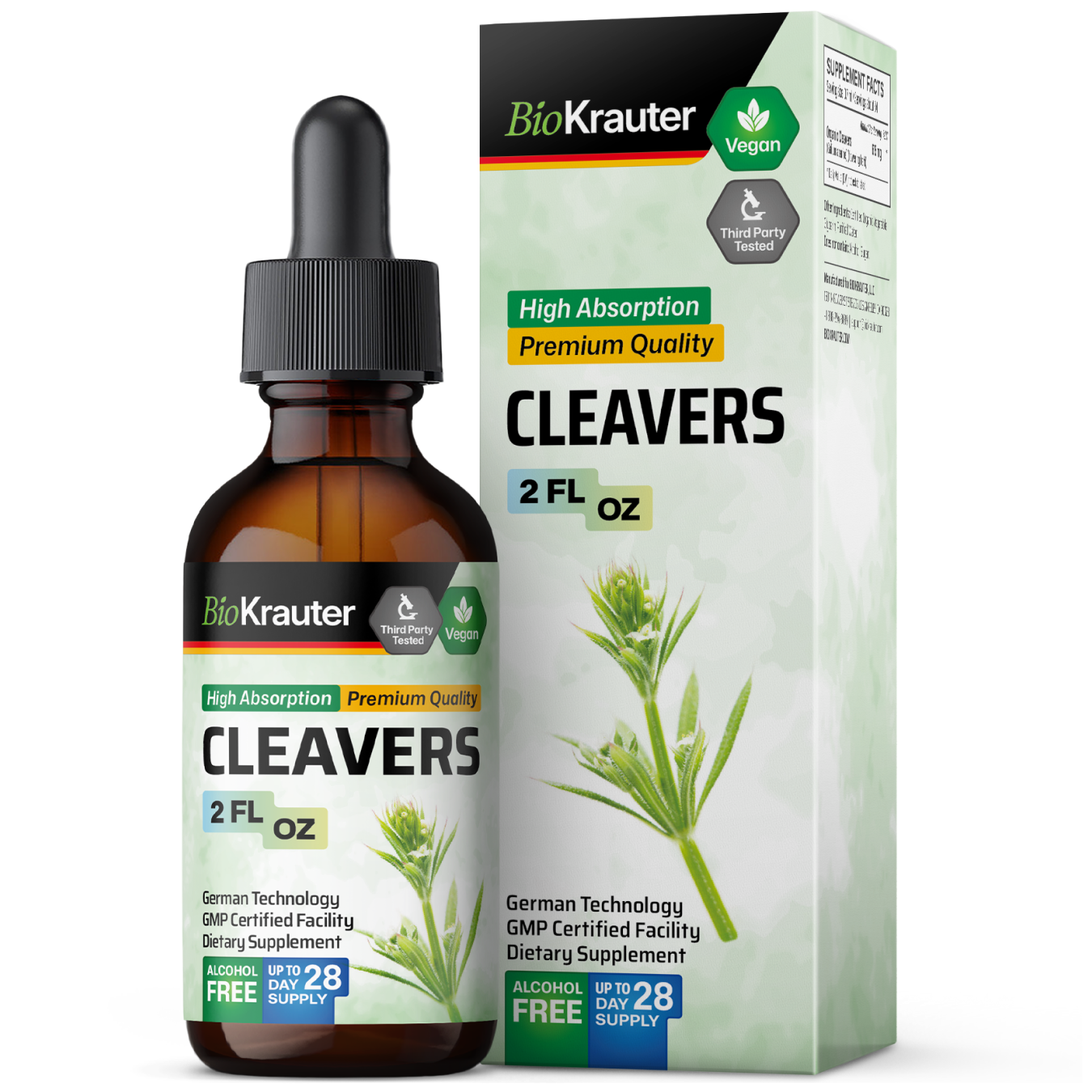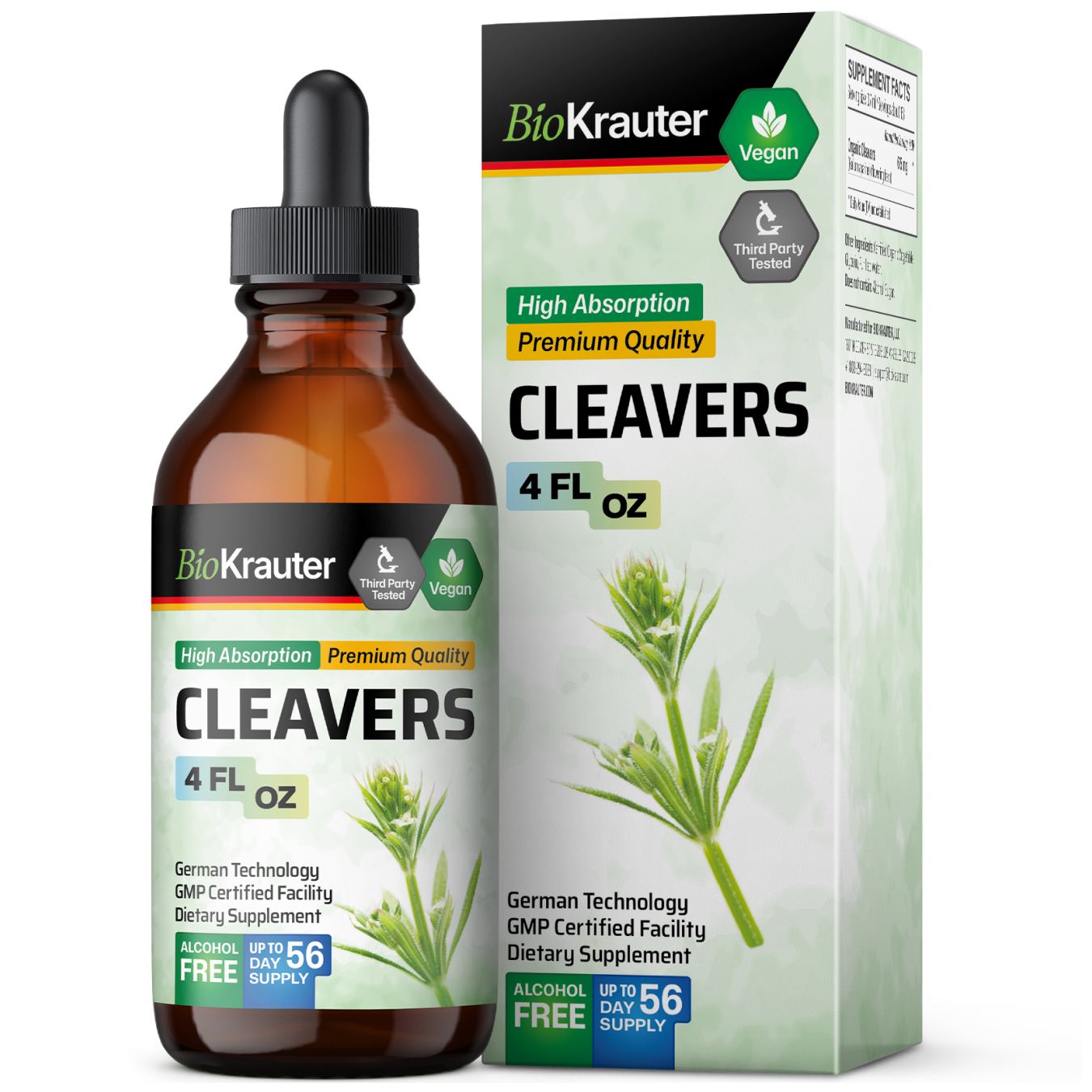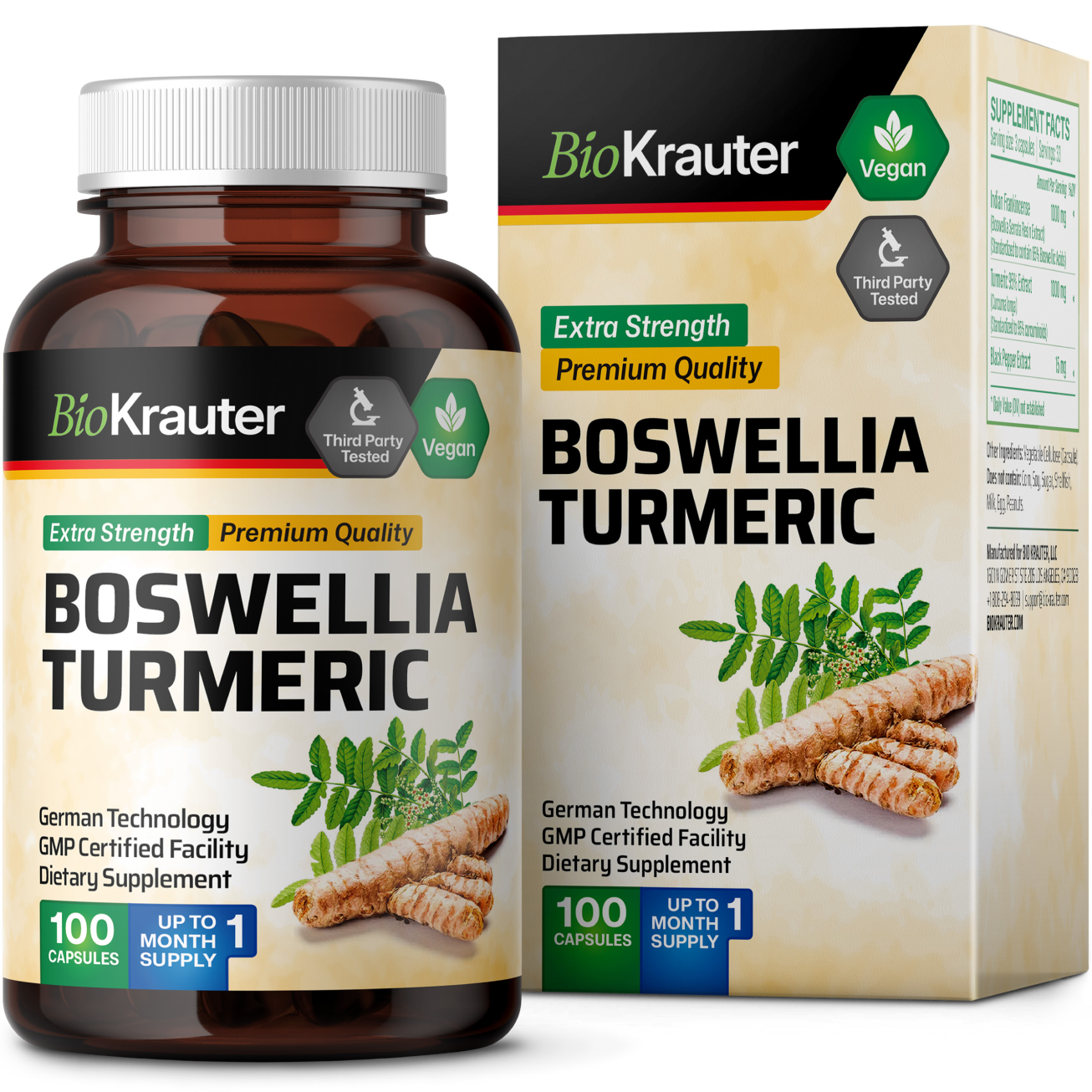-

What is Cleavers Used For?
Cleavers is a valued herb known for its natural cleansing and detoxifying properties. Among the most notable cleavers herb benefits are its diuretic and lymphatic-supporting actions. Traditionally, it has been used to soothe skin conditions such as eczema and psoriasis, thanks to its gentle anti-inflammatory effects. It also supports urinary tract health and is often used to help relieve discomfort associated with conditions like cystitis.





- Lymphatic system support One of the most well-known traditional uses of cleavers for lymphatic system health is its ability to support fluid circulation. The lymphatic system moves a clear fluid called lymph, which helps carry immune cells and remove cellular waste [1]. By encouraging this flow, cleavers helps the body naturally detoxify. Better lymph drainage may also reduce swelling often caused by blockages or poor circulation.
- Natural diuretic Cleavers’ ability to increase urine production is vital for promoting renal and urinary health [2]. As a diuretic, the herb stimulates the kidneys, enhancing their ability to filter and eliminate excess water and waste products from the body. This process is central to how it aids in reducing fluid retention, a common issue that can lead to swelling and discomfort.
- Skin health & youthfulness Among the many cleavers benefits, its impact on skin health stands out. It helps purify both the blood and lymphatic system — two key pathways for eliminating internal toxins that can affect the skin. By supporting this natural detox process, it may help prevent or reduce the severity of common skin issues like acne, eczema and irritation [3].
- Wound healing Excessive inflammation can impede the healing process. The compounds in cleavers herb, such as flavonoids and tannins, help reduce inflammation at the wound site [4]. This reduction in swelling and redness not only alleviates discomfort but also creates a more conducive environment for the healing process.
- Detoxification aid Cleavers leaf is widely valued for its powerful detoxifying capabilities, which stem from a combination of natural actions. Its diuretic properties help flush excess fluids and waste through the urinary system, while its gentle liver-supporting effects aid in processing and eliminating toxins. At the same time, cleavers enhances lymphatic circulation, helping to clear cellular waste and reduce internal buildup.
Products Featuring Cleavers
$12.59
$19.99
Looking for more information?
View All FAQsIndeed, cleavers is good to utilize as a food source, though it’s more commonly known for its medicinal properties. Incorporating it into your diet can be an interesting way to explore wild edibles and benefit from their nutritional and medicinal properties. That’s why it’s important to use it correctly to ensure it's both safe and enjoyable to consume. Here are some key points about using cleavers in cooking:
- Young Shoots and Leaves: These parts of the herb are most commonly used for culinary purposes. They are best harvested in the spring when the plant is young and tender.
- Preparation: Before using cleavers in cooking, it's important to wash them thoroughly to remove any dirt or debris. The plant can be quite sticky, which is something to be aware of during preparation.
- Cooking: The plant can be cooked similarly to other leafy greens. It can be boiled or steamed, which also helps reduce its stickiness. Boiling for a few minutes is usually sufficient to make it palatable.
- Flavor and Use: The taste of the herb is mild and slightly grassy. It can be used in soups, stews, or mixed with other greens in dishes. Due to its somewhat unusual texture, it might not be to everyone’s liking when used raw in salads.
- Tea: Aside from cooking, the plant is often dried and used to make cleavers tea. This is a popular way to enjoy their health benefits.
- Safety: While it’s generally considered safe to eat, it’s important for individuals to ensure they don’t have any allergies or adverse reactions to the plant. As with any wild foraged herb, proper identification is crucial to avoid consuming harmful species.
- Nutritional Content: The plant is known to be rich in vitamins and minerals, making it a nutritious addition to meals. However, it is most often used in small quantities due to their texture and mild flavor.
This plant is generally considered safe for topical use on the skin, and it's often used in herbal remedies for various skin conditions due to its soothing and healing properties. However, like any botanical ingredient, there are a few considerations to keep in mind to ensure its safe use for different skin types:
- Allergic Reactions: While allergic reactions to cleavers are rare, they still can occur. It's important for individuals, especially those with sensitive skin or a history of allergies, to do a patch test before using it extensively. This involves applying a small amount of the herb or a preparation made from it to a discrete area of skin and waiting to see if there is any adverse reaction.
- Skin Sensitivities: Individuals with certain skin conditions or sensitivities should be cautious and seek professional guidance.
- Quality and Purity: The quality of the herb is important. Contaminated or poor-quality herbs could cause skin irritation or allergic reactions. It's advisable to use cleavers from a reputable source to ensure it's free from pesticides and other contaminants.
- Concentration and Formulation: The concentration and formulation of cleavers in skincare products can vary. Products with high concentrations or in certain formulations might not be suitable for all skin types. It's important to follow the product guidelines or the advice of a healthcare professional.
Yes, it is allowed to apply topically and is often used in various forms for skin care and treatment of skin ailments. Its properties, such as being anti-inflammatory and soothing, make it suitable for topical application.
When using it topically, it's important to ensure that the plant has been correctly identified and is free from contaminants or pesticides, especially if it's wild-harvested. Always conduct a patch test before using a new herbal product to ensure that there is no allergic reaction. Additionally, while cleavers is generally considered safe for topical use, individuals with sensitive skin or specific skin conditions should exercise caution.

Free
Shipping
No shipping
cost over $50

Premium
Quality
Engineered to a gold
standard for your satety

Easy
Returns
30 days money-
back guarantee

















